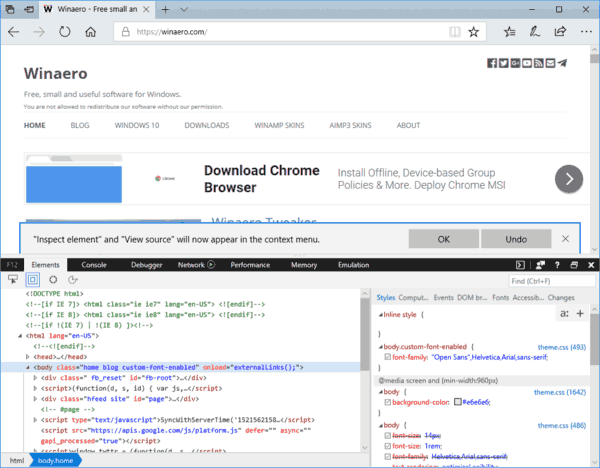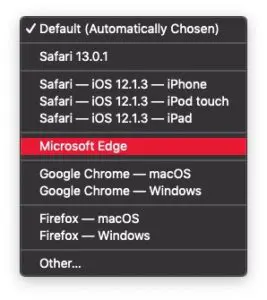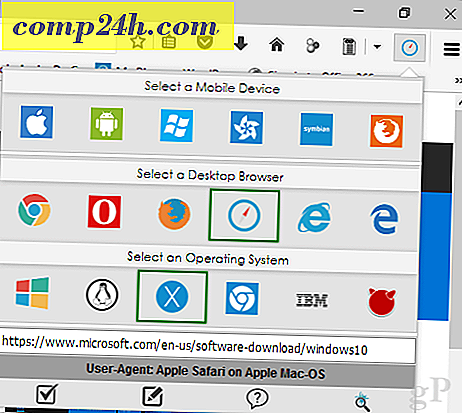AD FS 2016 now has an improved default setting that enables the Edge browser to do WIA while not also (incorrectly) catching Windows Phone as well: =Windowss.NT.Edg. The above means you no longer have to configure individual user agent strings to support common Edge scenarios, even though they are updated quite often. Mar 20, 2018 Open Microsoft Edge. Press the F12 key to open its Developer Tools. Go to the Emulation tab. Under Mode, click in the User agent drop-down list. Web Driver - How to override user-agent for Microsoft edge. Ask Question Asked 2 years, 7 months ago. Active 2 years, 7 months ago. Viewed 696 times 0.
-->
By default, Windows Integrated Authentication (WIA) is enabled in Active Directory Federation Services (AD FS) in Windows Server 2012 R2 for authentication requests that occur within the organization's internal network (intranet) for any application that uses a browser for its authentication.
AD FS 2016 now has an improved default setting that enables the Edge browser to do WIA while not also (incorrectly) catching Windows Phone as well:
The above means you no longer have to configure individual user agent strings to support common Edge scenarios, even though they are updated quite often.
For other browsers, configure the AD FS property WiaSupportedUserAgents to add the required values based on the browsers you are using. You can use the procedures below.
View WIASupportedUserAgent settings
The WIASupportedUserAgents defines the user agents which support WIA. AD FS analyzes the user agent string when performing logins in a browser or browser control.
You can view the current settings using the following PowerShell example:
Change WIASupportedUserAgent settings
By default, a new AD FS installation has a set of user agent string matches created. However, these may be out of date based on changes to browsers and devices. Particularly, Windows devices have similar user agent strings with minor variations in the tokens. The following Windows PowerShell example provides the best guidance for the current set of devices that are on the market today that support seamless WIA:
If you have AD FS on Windows Server 2012 R2 or earlier:
If you have AD FS on Windows Server 2016 or later:
The command above will ensure that AD FS only covers the following use cases for WIA:
| User Agents | Use cases |
|---|---|
| MSIE 6.0 | IE 6.0 |
| MSIE 7.0; Windows NT | IE 7, IE in intranet zone. The 'Windows NT' fragment is sent by desktop operation system. |
| MSIE 8.0 | IE 8.0 (no devices send this, so need to make more specific) |
| MSIE 9.0 | IE 9.0 (no devices send this, so no need to make this more specific) |
| MSIE 10.0; Windows NT 6 | IE 10.0 for Windows XP and newer versions of desktop operating system Windows Phone 8.0 devices (with preference set to mobile) are excluded because they send User-Agent: Mozilla/5.0 (compatible; MSIE 10.0; Windows Phone 8.0; Trident/6.0; IEMobile/10.0; ARM; Touch; NOKIA; Lumia 920) |
| Windows NT 6.3; Trident/7.0 Windows NT 6.3; Win64; x64; Trident/7.0 Windows NT 6.3; WOW64; Trident/7.0 | Windows 8.1 desktop operating system, different platforms |
| Windows NT 6.2; Trident/7.0 Windows NT 6.2; Win64; x64; Trident/7.0 Windows NT 6.2; WOW64; Trident/7.0 | Windows 8 desktop operating system, different platforms |
| Windows NT 6.1; Trident/7.0 Windows NT 6.1; Win64; x64; Trident/7.0 Windows NT 6.1; WOW64; Trident/7.0 | Windows 7 desktop operating system, different platforms |
| Edg/ and Edge/ | Microsoft Edge (Chromium) for Windows Server 2012 R2 or earlier |
| =~Windowss*NT.Edg. | Microsoft Edge (Chromium) for Windows Server 2016 or later |
| MSIPC | Microsoft Information Protection and Control Client |
| Windows Rights Management Client | Windows Rights Management Client |
Additional links
The new Microsoft Edge running on Chromium isn’t yet here officially, but a leaked build allows us to try out the browser in anticipation of its highly-anticipated release.
Using the browser on a daily basis isn’t obviously recommended as experimental builds like this can’t by any means become your main driver.
However, Edge seems a really polished browser that runs pretty smoothly, despite several important features still missing. But on the other hand, others are already there, including options to change the user agent if you need it.

Obviously, because Microsoft Edge is migrating from EdgeHTML to Chromium, changing the user agent is a different process now, and those who aren’t used to Google Chrome might find it a really difficult process.
And this happens because changing the user agent isn’t really the most straightforward process, as the option is placed in a menu that few people actually find when looking for it.
For many users, switching to a different user agent and thus emulating another browser is a method to bypass certain website restrictions that concern a specific app. For example, if a website doesn’t support Chromium, you can very well change the user agent to mimic a different browser like Mozilla Firefox.

User-agent Switcher For Chrome
The best example is Skype for Web, which doesn’t work in Firefox anymore, so Mozilla users need to switch to another user agent to connect to the service.

Interestingly, the Chromium-based Microsoft Edge also comes with a user agent for the original Microsoft Edge that’s still available in the existing Windows 10 builds. This is particularly useful for enterprises which developed internal apps specifically for the native Windows 10 browser.
In other words, switching to the Chromium-powered browser shouldn’t cause compatibility issues and still let your users connect to internal apps.
To change the user agent in the Chromium-powered Microsoft Edge, you first need to launch the Developer tools. This can be done either from the menu > More tools > Developer tools or by simply pressing CTRL + Shift + I when using the browser.
For those unfamiliar with this screen, it’s specifically supposed to provide developers with advanced tools that let them analyze code and website performance. Changing the user agent is actually considered a developer option that helps webmasters check their pages against potential compatibility issues with different browsers.
In the Developer tools menu, look in the upper side of the screen for the three-dot menu that looks like this “…” and then click it. Go to More tools > Network conditions and scroll down to see the lower part of the screen.
By default, Microsoft Edge is configured to Select automatically the user agent, so you need to uncheck this option to be able to choose a custom setting. Uncheck this option and then click the Custom drop-down menu to choose another user agent – you can pick from a wide variety of options, including mobile and desktop browsers.
The browser does not need a reboot to save the new settings, and your pages should then reload to apply the custom user agent.
This method is very similar to the one in Google Chrome, and it makes sense given that the two browsers are now running on the same engine.
Edge User Agent Overrides
Third-party extensions that make it possible to change the user agent faster and easier are also available for both browsers – Microsoft Edge now runs all extensions that were developed for Google Chrome, so you can head over to the Chrome Web Store to install any extension you want. This is actually one of the biggest benefits of Microsoft Edge switching to Chromium.
